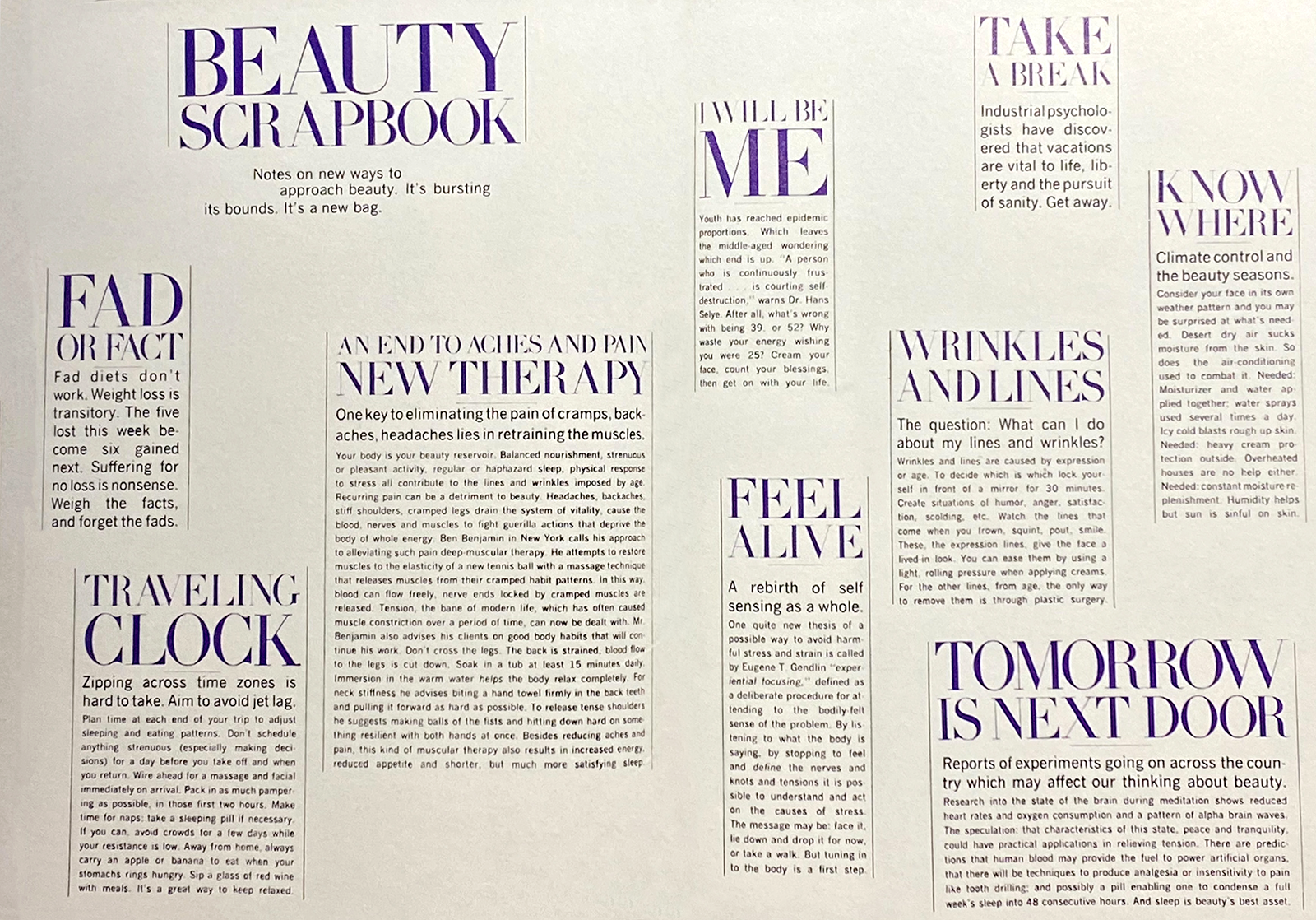The original two-door Mini was a small car produced by the British Motor Corporation (BMC) and its successors from 1959 until 2000. It’s now considered an icon of the ”60s.
Inspired by Bea Feitler
Bea Feitler has been described as “the pioneering female art director you’ve never heard of.” Only one exhibition has been staged about her work and one retrospective book published. “O Design de Bea Feitler,” written by her nephew, was published in her native Brazil in 2012. It took me months to track down a copy, but eventually, I found one.
Feitler combined Brodovitch’s mastery of the double-page spread with her choices of bold colors which were inspired by pop artists Jasper Johns, Roy Lichtenstein, and Andy Warhol, as well as street fashion and youth culture. I find her typographic designs especially fascinating, and especially how she often combined typography with deconstructed grids.

About Bea Feitler
Bea Feitler was born in Rio de Janeiro in 1938. After working on album covers, book jackets, magazines, and poster designs, she left Brazil and moved to Manhattan. In 1961—and still only 25 years old—she became an art assistant, then one of the youngest and first female co-art directors at Harper’s Bazaar alongside Ruth Ansel.